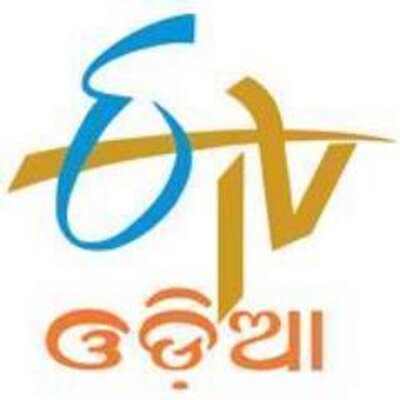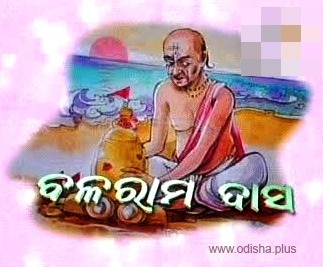Dr. Fakira Mohan Nahak
THE TELEVISION NEWS INDUSTRY IN ODISHA HAS GONE THROUGH A PROGRESSIVE JOURNEY IN THE PAST TWO DECADES. IN THIS SERIES DR. FAKIRA MOHAN NAHAK PRESENTS THE MEDIA HISTORY BLENDED WITH HIS CLOSE OBSERVATION ON THE FAST-CHANGING INDUSTRY.
As the people of Odisha, the principal identity in front of the world is our language and Lord Jagannath. For others, He is the lord of the universe but for us, he is our own. He is our family. He is our friend. He is our life.
Wherever we go, whatever we do, we, the people of Odisha can’t think of a life without the trinity of Lord Jagannath and his siblings. So it was obvious on the part of ETV Odia to broadcast Bande Utkal Janani, the song that evokes a sense of pride and familiarity followed by the visuals of Chief Minister Naveen Patnaik lighting the lamp in front of Lord Jagannath when it went on air on January 27, 2002.
ETV Odia, being a private satellite channel managed to get the rights of doing live broadcast of the Rath yatra. For the love of the Lord, the management fought against the national broadcaster in the court and won to make sure the Jagannath culture and festivals reach the wider audience.

ETV was the first private television channel in the world to broadcast the Rath yatra that same year it was born. After the first year, in the following years, apart from the Rath yatra, the Bahuda yatra (Return journey of the deities), the Sunabesha (The Golden Attire), the Adhar Pana (The drink to satiate the invisible souls) and the Niladri Bije (Entry of the deities into the sanctum sanctorum of the temple), all these festivals and rituals were broadcast live by ETV.
As the Rathyatra draws to a close, ETV’s programming team was always worried about how the live broadcast would be arranged in a smooth and seamless way. Arrangements have to be made to bring the DSNG van or OB van from Hyderabad to Puri along with the technical team.
The biggest challenge was to get in touch with researchers of Sree Jagannath culture, eminent writers, speakers and preachers, and to arrange for them to give the live commentary on the famous Rathyatra. ETV presented all the rituals, facts and festivals from Rathyatra to Niladri Bije to the viewers through eminent commentators like Prof. Harekrishna Satapathy, Pandit Suryanarayana Rath Sharma, Dr. Niranjan Mishra, Ghanshyam Mishra, Dr. Tulsi Ojha, Dr. Manorama Mohapatra, Dr. Shirsananda Mishra, Dr. Sarat Kumar Kar, Dr. Rajat Kumar Kar, Dr. Padmanabha Tripathi, Prafulla Patnaik, Arakshit Das, Dr. Sarojini Sadangi, Shankarshan Mangraj, Professor Shukadev Mohanty and Shukadev Sadangi. Some of these expert scholars are now in their heavenly abode with Lord Jagannath.
For the first time, ETV was able to bring the commentators on screen and did the live commentary from the Singha dwara (the entrance of the temple), the beach and the Srigundicha temple. In addition to the live broadcast, ETV was producing a hymn and music-based program titled Nilachakre Hey. Renowned singers like Shantilata Barik, Arabinda Muduli, Chitta Jena, Dr. Sangeeta Gosa in performed in the program.
ETV started the trend of having a musical program in the middle of the live telecast. Similarly, for the first time, ETV also presented information about Rathyatra and Shree Jagannath culture on the television screen through graphics. In addition to creating awareness among the audience about the Shri Jagannath culture, ETV was organizing two competitions among the viewers about the Shri Jagannath culture.
It was the Jay Jagannath competition, in which anyone could participate and do a drawing related to Shri Jagannath. The second was a quiz about Shri Jagannath. During the live broadcast, viewers were asked various questions about the Rathyatra and they could send the answer via SMS. Lastly the winners were awarded with some prizes.
All these programs were produced and managed by ETV Oriya’s programming team. ETV News, on the other hand, launched an innovative initiative in 2004 called Jeevan Jagannath which literally means Jagannath as a way of life. From Srigundicha Yatra to Neeladri bije, Jeevan Jagannath was broadcast daily as a special section in various news bulletins.

The information shared in the program was not just confined to Shrikshetra, but outside its geographical boundaries, the essence of how Shree Jagannath consciousness is pervading our existence and how life is driven by the thoughts of Jagannath.
The program was a showcase of the stories of many people who make their living with Shree Jagannath, starting with the servitors engaged in the various service of the lord of the universe. Whether it is the artisans of Khordha who make decorated flowers in thermocol or the servitors who provide the holy Tulsi (basil, botanical name- Ocimum sanctum) and Dayana leaves (botanical name- Artemisia nilagirica) to the temple every day, whether it is the presence of Shri Jagannath in different princely states or the memory of Shri Jagannath’s secret time in different parts of the then Kalinga, everything was covered as part of the special program called Jeevan Jagannath.
Jeevan Jagannath was presented to the viewers during the Rathyatra as a series by the ETV News team starting from 2004 to 2011. In the first year, the program was produced by Ardhendu Das (now Editor-in-Chief of the channel Bada Khabar), while in 2005 it was produced by Santosh Mohapatra. But from 2006 to 2010, the author was in charge of producing the series.
2011 it was produced by Bibhu Prasad Barik. Sisir Bhattamishra, Radhamadhav Mishra, Bhavani Shankar Tripathi and Sarat Paikray from Bhubaneswar, along with reporters from different parts of the state were providing inputs and reporting for the program. Reporters from different parts of the country like Gujarat, Delhi, Mumbai, Chennai, Hyderabad, Kolkata and Guwahati also provided information and pictures about Shri Jagannath. This made the program even richer and garnered attention from the viewers.
The most important aspect of the program was to present the facts, history and humane aspect of Lord Jagannath in an innovative and unique way to the viewers. ETV Odia did a fantastic job in doing all the creative experiments. It was either expensive or not possible at the time to do the work that is being done today through state-of-the-art graphics systems and digital visualization.
The challenge, then, was to stay creative and present the best output to the viewer staying within the confines of the pre-approved budget. It was only natural that no picture of that time would be available while presenting the tales of history.
There are no pictorial or visual evidences that narrate the incident of Balaram Das, a great devotee of the Lord being humiliated and pushed out of the chariot, or the making of chariot by him in sand of the sea shore out of sheer devotion (Balaram Das is regarded as the first sand artist of the world) and the cease of the movement of the Rath on the grand road due to this act of extreme devotion.
Whether it was the history of the attack on the temple by various foreign invaders or the history of the Rathyatra or the tradition of building six new chariots every year and how it was stopped, every reference to the past was very carefully presented to the viewers in Jeevan Jagannath.

For the first time in the history of Odia television, to create an impressive visual impact on the audience, the channel reached out to Baldev Maharatha, a famous artist. He gave his best to recreate history by painting various incidents of history with the help of colours and brushes on various drawing sheets and canvas.
Then these paintings were filmed taking various shots, including block shots and various camera movements and then those visuals were being used while narrating the anecdotes of history and mythology. Such an experiment was well-received by the audience. Not only the Rath yatra, but also the story of the emergence of Bhadra kali, the presiding deity of Bhadrak was presented by ETV through drawings. The same experiment was then followed by other channels at the national level to address the gap of not having the visuals of any historical incident.
With the technological advancements, nowadays it can be easily made in illustration. So even though technological know-how has evolved, it seems like a milestone when it comes to the old days. It would not be wrong to call it a successful experiment of ETV at that time.
(Dr. Fakira Mohan Nahak is a writer and former media professional. He is currently working as the Head of the Department of University Institute of Media Studies, Chandigarh University at Mohali, Punjab. Views are Personal)
Tags: #ETVIANs #TelevisionJourney #ETVOdia #LordJagannath #RathYatraLive #RathYatraHistory #LordJagannathStory






















